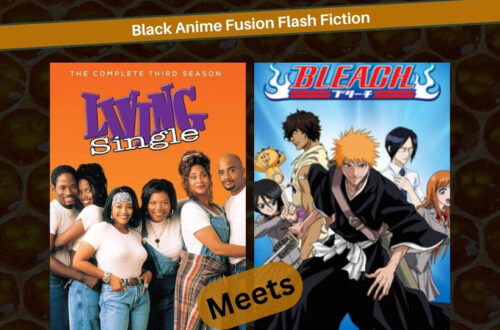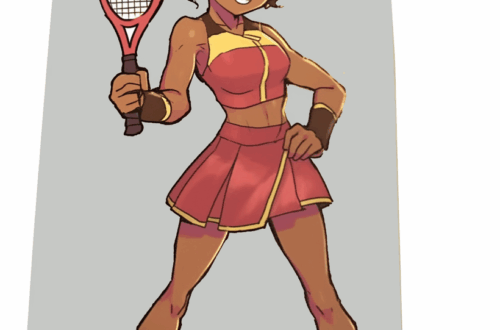At Bee Terrific Media, we know that a strong fictional narrative isn’t just a series of random events—it’s a carefully crafted story with a clear structure. Without a strong foundation, writers often end up with long lists of events that lack purpose.
Today, we’re focusing on the essential parts of a fictional narrative by breaking down:
-
The high-stakes world of Sword Art Online: Aincrad
-
The character-driven humor of Martin
By studying these examples, you’ll learn how to build engaging plots, dynamic characters, and meaningful conflicts—whether your genre is action, adventure, or comedy.
The Key Parts of a Fictional Narrative
Every great story follows a structure that keeps readers engaged. The three essential parts of a fictional narrative are:
-
Beginning (Exposition & Conflict Introduction) – Who are the characters? Where is the story set? What problem are they facing?
-
Middle (Rising Action & Climax) – What obstacles or challenges do they overcome? How does the tension build?
-
End (Falling Action & Resolution) – How does the conflict get resolved? What changes for the characters?
One of the best ways to learn this structure is by working backward—starting with a summary format and then expanding it into a full story.
Mentor Text #1: Sword Art Online: Aincrad – High-Stakes Storytelling
Background
-
Genre: Action, Adventure, Virtual Reality
-
Author: Reki Kawahara
-
Published by: Kadokawa
-
Volumes: 36+ (ongoing since 2009)
Breaking Down the Narrative Structure
-
Beginning (Exposition & Conflict Introduction)
-
The story starts inside Aincrad, a floating castle that serves as the game world for Sword Art Online (SAO).
-
10,000 players log in for the first time, only to realize they are trapped inside the game. The only way to escape? Beat all 100 floors.
-
Kirito, a solo player with previous experience in the beta test, decides to fight alone to survive.
-
-
Middle (Rising Action & Climax)
-
As players struggle, the stakes become deadly—if they die in the game, they die in real life.
-
Kirito forms a partnership with Asuna, an elite player from the Knights of the Blood guild.
-
The duo faces betrayals, powerful enemies, and moral dilemmas as they try to survive.
-
Climax: Kirito duels Heathcliff, the guild leader, only to discover he is the creator of the game.
-
-
End (Falling Action & Resolution)
-
Kirito defeats Heathcliff, beating the game but at a cost.
-
The surviving players escape, but Kirito wakes up in a hospital, searching for Asuna in the real world.
-
What Writers Can Learn from Sword Art Online
-
High Stakes Keep Readers Hooked – The trapped in a death game scenario gives every action weight and consequence.
-
Build Rising Action with Small Victories & Setbacks – Kirito’s progression from solo player to reluctant hero keeps the tension strong.
-
A Clear End Goal Drives the Story – Reaching the 100th floor gives the narrative direction.
Mentor Text #2: Martin – Conflict in Comedy
Background
-
Genre: Sitcom, Comedy
-
Created by: Martin Lawrence
-
Network: FOX
-
Seasons: 5 (1992–1997)
Breaking Down the Narrative Structure
-
Beginning (Exposition & Conflict Introduction)
-
Martin Payne, a Detroit radio DJ, is in a relationship with Gina Waters.
-
The Conflict: Gina hears Martin making sexist comments on air and confronts him about it.
-
-
Middle (Rising Action & Climax)
-
Martin refuses to apologize, leading to an argument that threatens their relationship.
-
Climax: Martin tells her to go and as she does, he starts crying
-
-
End (Falling Action & Resolution)
-
Martin admits he was wrong, and he and Gina reconcile.
-
The episode ends when hey agree to make up in front of Martin’s friends to save face—but Gina makes Martin attend a fancy dinner as punishment.
-
What Writers Can Learn from Martin
-
Conflict Doesn’t Have to Be Life-or-Death – Comedy thrives on personal stakes, not just high-stakes action.
-
Characters Drive the Story – The entire plot centers on Martin’s flaws and how his personality clashes with Gina’s.
-
Dialogue & Humor Build Engagement – Fast-paced dialogue keeps the audience entertained while pushing the narrative forward.
Writing Exercise: Work Backward with “Somebody, Wanted, But, So, Then”
One way to plan your own fictional narrative is by summarizing first, then expanding the idea into a full story.
Use this formula:
-
Somebody (Who is the main character?)
-
Wanted (What do they want?)
-
But (What is the obstacle?)
-
So (What do they do?)
-
Then (How does it end?)
Example 1: Sword Art Online (Action)
-
Somebody – Kirito, a solo player in SAO
-
Wanted – To survive and escape the game
-
But – The only way out is to clear all 100 floors and death in-game means death in real life.
-
So – He teams up with Asuna and fights his way through dangerous battles.
-
Then – He defeats the final boss, freeing the players.
Example 2: Martin (Comedy)
-
Somebody – Martin, a confident but stubborn radio DJ
-
Wanted – To win an argument with Gina
-
But – Gina outsmarts him and forces him into a dinner he hates
-
So – Martin tries to survive the dinner but makes things worse
-
Then – He finally apologizes, and they make up (with jokes along the way).
Your Turn: Create a Fictional Narrative Setup
Spin a random combination of character, setting, and conflict, and create a short summary using Somebody, Wanted, But, So, Then.
Example Prompts:
-
Character – A rogue bounty hunter
Setting – A futuristic neon city
Conflict – The bounty is someone from their past -
Character – A washed-up superhero
Setting – A retirement home
Conflict – A new villain threatens the city -
Character – A comedian
Setting – A prison
Conflict – They have 24 hours to prove their innocence
Ready to Write?
A strong fictional narrative combines character, conflict, and resolution in a compelling way. Whether you’re writing an action-packed comic or a character-driven screenplay, understanding story structure will make your writing stronger.
At Bee Terrific Media, we craft stories that entertain, inspire, and represent diverse voices. Now, it’s your turn. What story will you tell next? 🚀


